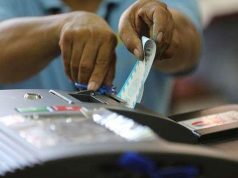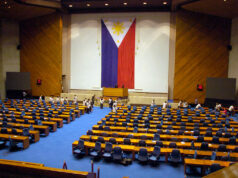Foreign debt rises 1.7% quarter on quarter at end-September
EXTERNAL DEBT at the end of September rose 1.7% compared with the end of June, to $82.7 billion, the Bangko Sentral ng Pilipinas (BSP) said late Friday.
According to the BSP, the uptick in debt came on the back of “net availments of $2.2 billion attributed to bond issuances of the national government and private local banks.”
“Increase in residents’ investments in Philippine debt papers issued offshore amounting to $426 million, negative foreign exchange revaluation of $211 million, and prior periods’ adjustments of $114 million partially offset the uptick in the debt stock,” the central bank said in a statement.
External debt includes all kinds of loans received by Philippine residents from non-residents.
The central bank said that the key foreign debt indicators continue to be at prudent levels, with the debt service ratio as a proportion of export and service receipts improving to 6.4% at the end of September from 7% a year earlier.
The external debt-to-GDP (gross domestic product) ratio was 23.7% at the end of September, up from 23.5% a year earlier.
Asked to comment, Rizal Commercial Banking Corp. Chief Economist Michael L. Ricafort said in an e-mail Sunday: “The increase in the country’s external debt-to-GDP ratio may still be considered relatively better compared to recent decades amid improvements in the country’s fiscal management as far as justifying the recent improvement in the country’s credit ratings is concerned and compared to similarly rates countries as well.”
Government borrowing accounted for $42.5 billion at the end of September, up from $42.3 billion a quarter earlier.
Some $35.6 billion consisted of borrowing by the national government and $7 billion represented loans entered into by government-owned and controlled corporations, government financial institutions and the BSP.
“Some of the increase in foreign debt may reflect some of the large funding/official development assistance (ODA) needed to finance the country’s major/big-ticket infrastructure spending that may reap long-term benefits for the country’s sustainable growth and development,” Mr. Ricafort said.
Private-sector debt rose to $40.2 billion from $39 billion at the end of June. The BSP noted that the share of the private sector to the total debt increased to 48.6% from 48% in the previous quarter.
“The recorded rise in private-sector borrowing may be attributed to bond issues by banks, of which $401 million are ASEAN Green Bonds,” the central bank added.
Japan continued to be the top creditor with $14.8 billion worth of disbursed loans, the BSP said. This was followed by the US ($4.3 billion), the UK ($3.6 billion) and the Netherlands ($3.1 billion).
Foreign debt in mainly denominated in dollars (59.2%) followed by yen (13.8%). — Luz Wendy T. Noble



